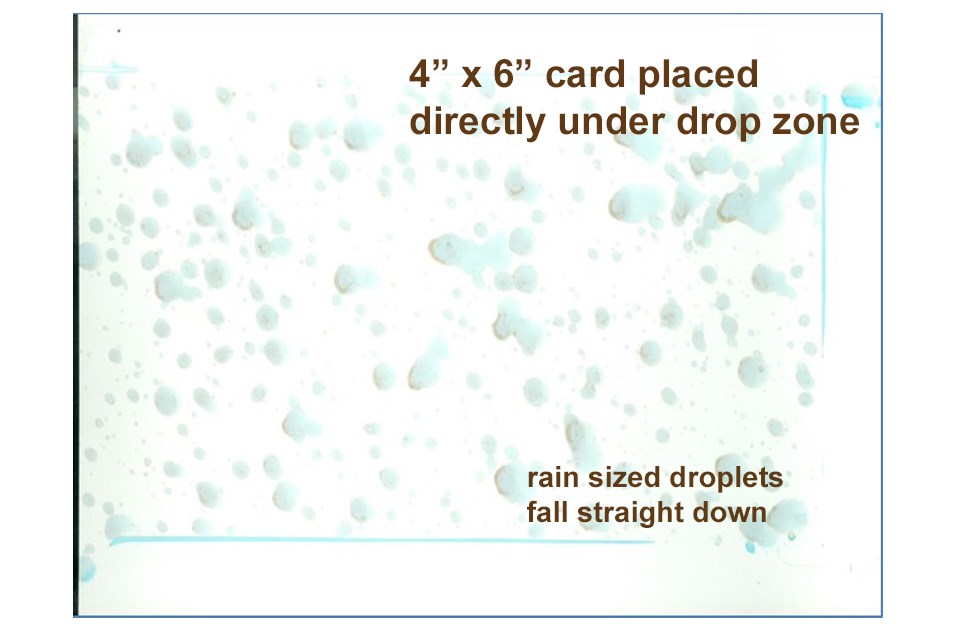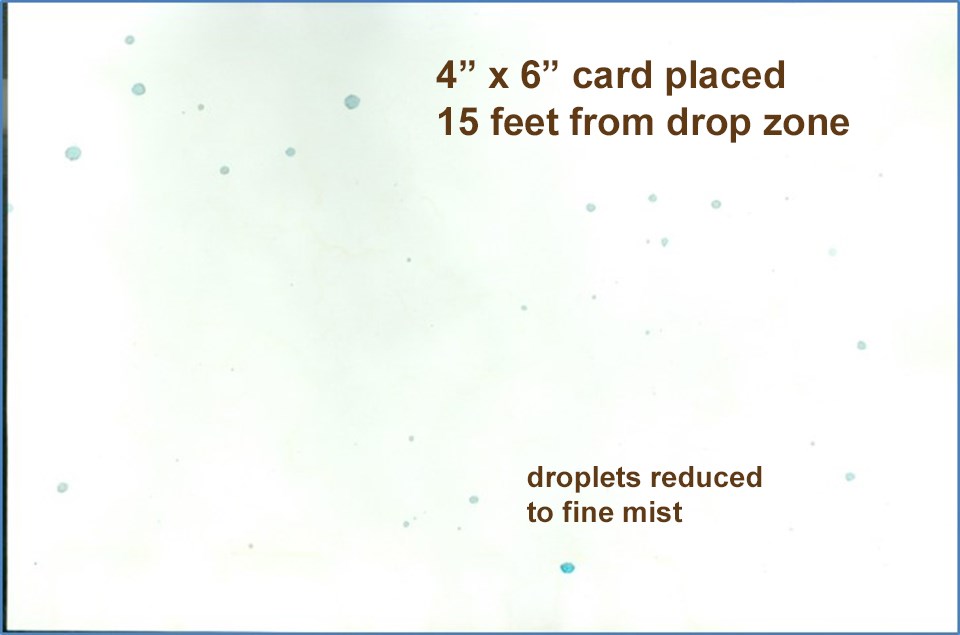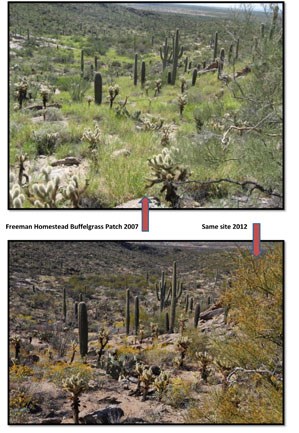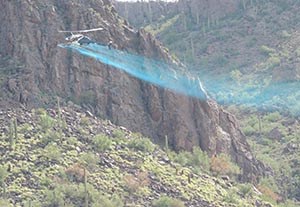|
Buffelgrass in Saguaro National Park
The Plan to Fight Buffelgrass and Restore Native Habitat Saguaro National Park completed a Restoration Plan and Environmental Assessment (RPEA) in 2014 that describes management actions proposed to restore native vegetation and mitigate negative impacts to park lands from damage caused by wildfire, floods,invasive species, or other large-scale changes to the environment. The RPEA, which was available for public review and comment for 30 days, included descriptions of the proposed alternatives, and identified and compared their potential environmental impacts. The preferred alternative includes all of the restoration techniques the park had been using to date, and allows for aerial (helicopter) delivery of restoration treatments to sites that are not accessible by ground crews. The National Park Service approved the RPEA with a Finding of No Significant Impact (FONSI) that took the assessment and public comments into account, and accepted the preferred alternative.
Science-based Solutions At Saguaro National Park we are committed to evaluating the effectiveness and costs of different methods of buffelgrass control. Our research includes studies on herbicides efficacy and toxicity on both buffelgrass and non-target native vegetation and wildlife, such as desert tortoise. The Park has also funded studies on the use of remote sensing techniques, such as satellite imagery, to identify and monitor buffelgrass and its fuel loads, and we are also developing computer models to predict buffelgrass spread and buffelgrass-fueled fire behavior. Series of "drift cards" set out to record herbicide drift. They are 4 x 6 inch water sensitive cards that show each drop that hit them. We put them out around sprayed areas to ensure that the buffelgrass patches are hit and drift off site is minimized. 

Left image
Right image

Success - at a Small Scale Our ground-based control efforts include manual pulling of plants, and spraying herbicides with backpack in areas accessed on foot. Through a process called adaptive management (assessing the results of our actions to ensure that our goals are met without unacceptable side effects, and adjusting our strategies accordingly), we've learned that to successfully control buffelgrass, treatments must occur several times a year for up to five years. Constrained by factors such as inaccessibility, a limited treatment window, and the need for repeated treatments, there was little hope of controlling the estimated 2,000 acres of buffelgrass growing in 2014 throughout the park by ground-based efforts alone. At a predicted spread rate of 10% - 35% annually, we simply cannot keep up with the growth of buffelgrass. 
Next Step In 2010, we partnered with other local, state, and federal agencies to evaluate the use of helicopters to deliver herbicides for buffelgrass control. Both a boom mounted to the underside of a helicopter, and a "spray ball" tethered from a helicopter, proved to be effective delivery mechanisms for the herbicide. The boom application is appropriate for treating large infestations that no longer support native plant communities; and because of its precision, the spray ball is ideal for treating small infestations. Follow-up studies of this treatment found that many native species, particularly cacti and trees, were largely unaffected by glyphosate (see links below). Per the 2014 RPEA aerial herbicide treatments proposed only for remote and difficult to access sites that are dominated by (>50% cover). Aerial spraying of herbicides will not occur within a quarter-mile of occupied private property, one hundred and sixty-five feet of a spring or other water source, or in areas above six thousand feet elevation. We will continue to monitor treated areas to evaluate the effectiveness of aerial spraying, and to identify and mitigate negative impacts. Please stay involved with this process by checking for updates on this website. Buffelgrass (Pennisetum Ciliare) Identification Evaluating Aerial Application of Herbicides for Buffelgrass Control Southern Arizona Buffelgrass Coordination Center Buffelgrass fuel loads in Saguaro NP increase fire danger and threaten native Video - Welcome to the Buffelgrass Patch Video - Buffelgrass! The Epic! |
Last updated: January 21, 2021
